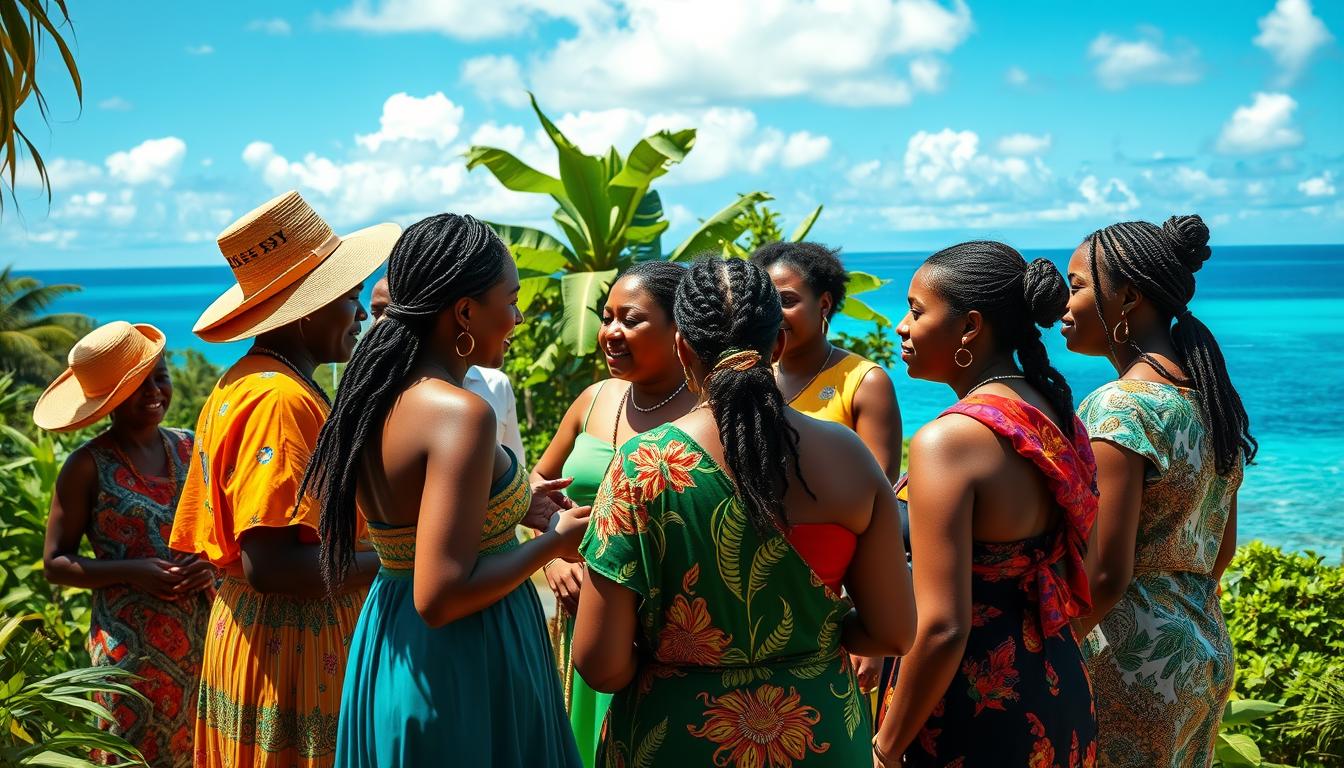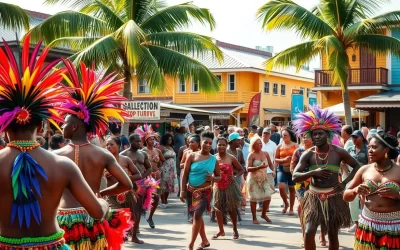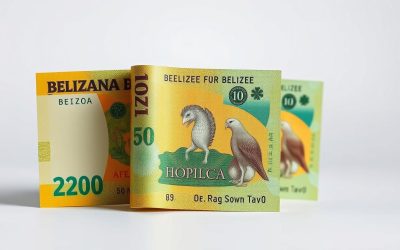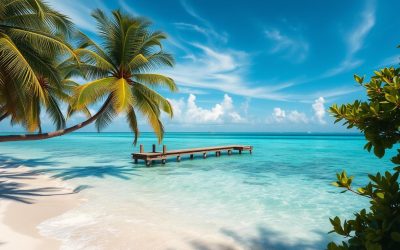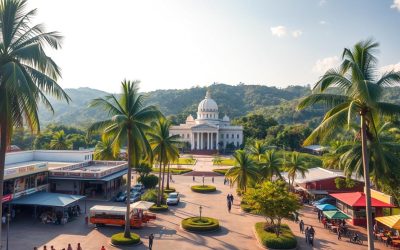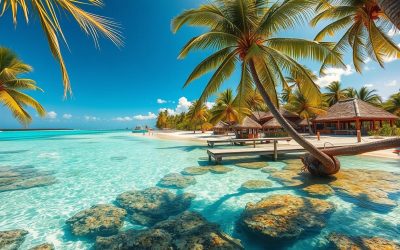Have you ever wondered how a small Central American nation can speak so many languages? Belize is a special place where English, Spanish, and indigenous languages mix. This creates a rich cultural fabric.
Belize is the only English-speaking country in Central America. It shows how different languages can blend together. With 62.9% of the population speaking English, it’s a unique place.
Exploring Belize’s languages takes you on a journey through history, migration, and culture. From government offices to everyday talks, languages here share stories of strength, change, and identity.
Key Takeaways
- English is the official language of Belize
- Over 62% of the population speaks English
- Belize represents a unique multilingual environment
- Spanish is spoken by 56.6% of the population
- Multiple indigenous languages contribute to the nation’s linguistic richness
Language Diversity in Belize: A Cultural Mosaic
Belize is a place where many languages come together, making a rich cultural mix. Exploring this Central American country shows a unique mix of languages. This mix shows the country’s complex history and diverse people.
The languages in Belize are a mix of old and new. They tell stories of survival and change through history.
Historical Language Development
Belize’s language history is shaped by many periods:
- Maya civilization’s indigenous language foundations
- British colonial linguistic imprint
- Spanish regional influences
- African and Caribbean language contributions
Current Language Distribution
In Belize, language policies support a wide range of languages. Here’s a look at who speaks what:
| Language | Percentage of Speakers | Primary Regions |
|---|---|---|
| English | 62.9% | Nationwide |
| Spanish | 56.6% | Northern and Western Districts |
| Kriol | 44.6% | Coastal and Urban Areas |
Linguistic Demographics
In Belize, speaking many languages is not just common; it’s celebrated. From Maya communities to Garifuna groups, each language tells a story. Belize is a living example of language diversity.
“Language is the road map of a culture. It tells you where its people come from and where they are going.” – Rita Mae Brown
Every language in Belize is more than just a way to talk. It’s about culture, history, and community ties.
English as the Official Language
Belize is a unique Caribbean nation where English is the main official language. Exploring Belize’s language scene shows a mix of culture and communication. Not all Belizeans speak English as their first language.
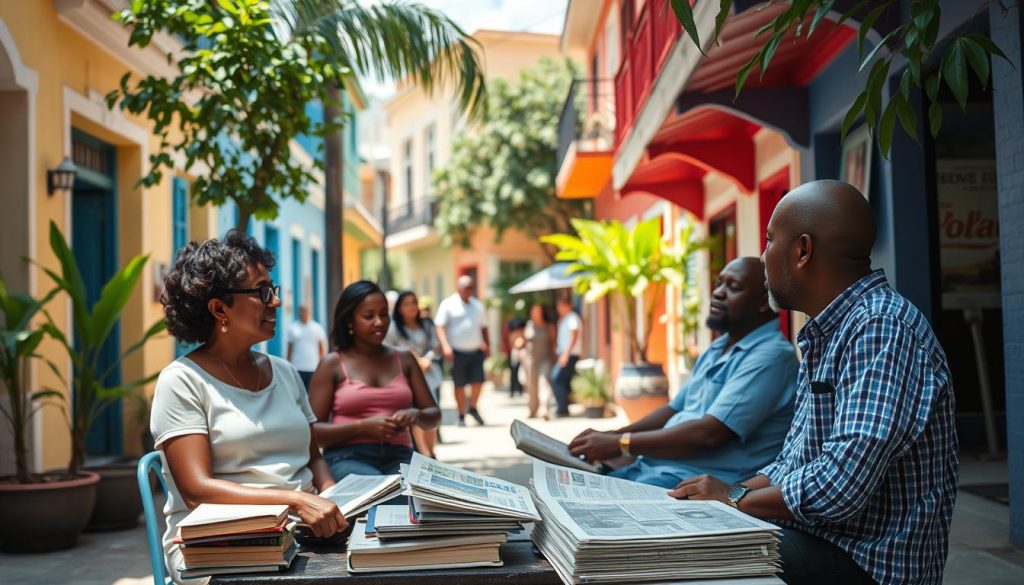
English’s role in Belize is complex and widespread. It affects how people communicate, learn, and govern. Let’s look at how English shapes these areas in this lively country.
Standard English Usage
Standard English is key for formal talks in Belize. It’s used in:
- Legal documents
- Business deals
- Media
- Professional settings
Role in Education
English is vital in Belize’s schools and universities. About 80% of people know English well. It’s the main language taught in schools and universities.
“Language is the roadmap of a culture. It tells you where its people come from and where they are going.” – Rita Mae Brown
Government and Administrative Communication
English is the official language for government in Belize. This makes sure everyone can understand official talks. It helps connect the country’s different language groups.
Understanding Belize’s language scene shows a smart way of using English. It brings people together while honoring the country’s diverse languages.
Belizean Creole: The Heart of Local Communication
Explore the lively world of Belizean Creole, also known as Kriol. It’s a language that shows the heart of Belize’s culture. It mixes history and culture in a unique way.
Kriol started in the 17th and 18th centuries. It’s a mix of English and African languages. Today, it’s a big part of Belize’s culture, spoken by 44.6% of people.
“Tek yuh time” – a classic Kriol expression meaning “Take it easy” – perfectly encapsulates the language’s unique character.
- Originated from a blend of English and African linguistic roots
- Developed distinct grammar and vocabulary
- Widely used in everyday conversations
- Featured in local music and broadcasts
The sound of Kriol is special. It changes English words like ‘this’ to ‘dis.’ The Belize Kriol Project started in 1997 to keep this language alive.
| Kriol Feature | Linguistic Characteristic |
|---|---|
| Origin | 17th-18th Century Blend |
| Speakers | 44.6% of Belizean Population |
| Language Type | English-Based Creole |
Even though English is official, Kriol is Belize’s true language. It connects people, shows culture, and keeps growing as a way to communicate.
Spanish Language Influence and Usage
Belize’s language scene is brightened by Spanish, a key part of its multilingual mix. With about 52.9% of Belizeans identifying as Mestizo, Latino, or Hispanic, Spanish is deeply woven into the nation’s culture.
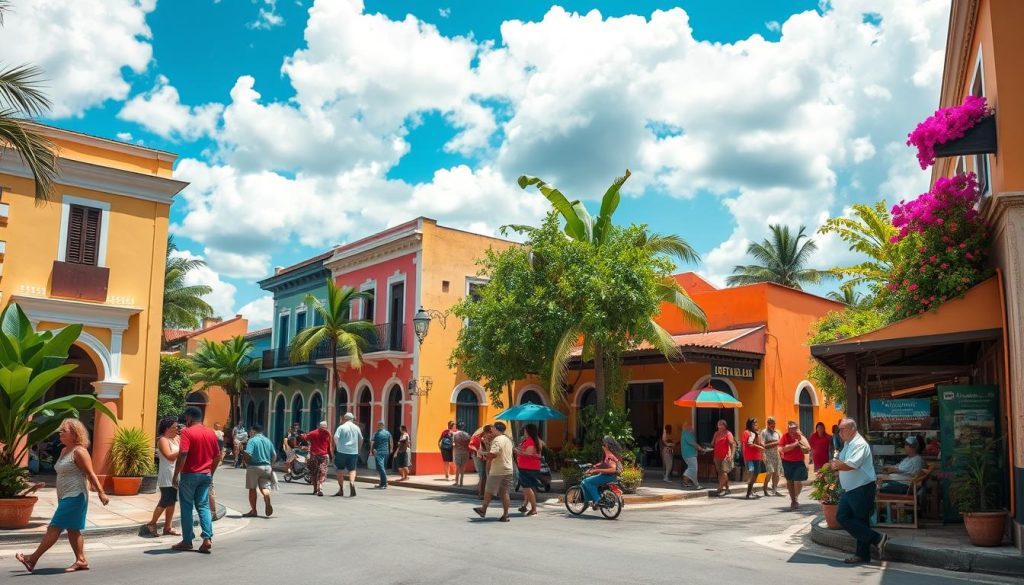
Spanish in Belize is more than just a way to talk. It connects different communities. Around 56.6% of people speak Spanish, with about 30% speaking it as their first language. This shows Belize’s rich cultural mix and its close ties to Spanish-speaking countries.
Regional Spanish Variations
Spanish in Belize shows interesting regional differences, especially near Mexico and Guatemala. You’ll find special dialects that mix local and Spanish influences:
- A simplified form known as kitchen Spanish
- Unique border region dialects
- Influences from indigenous languages
Spanish in Education
Education is key in keeping Spanish alive and growing. Schools in Belize teach Spanish to kids who don’t speak it first. This makes sure everyone can understand and respect each other’s cultures.
Border Region Dialects
In places like Corozal and Orange Walk, Spanish is the main language. Here, 84.7% and 85.6% of people speak Spanish, making these areas special multilingual spots.
“Language is the roadmap of a culture. It tells you where its people come from and where they are going.” – Rita Mae Brown
Getting Spanish in Belize means seeing its importance beyond just talking. It shows the country’s rich mix of cultures and its dedication to language diversity.
Maya Languages and Indigenous Heritage
Belize is rich in Maya indigenous languages, showing the deep roots of its native communities. The country has three main Maya languages: Q’eqchi’, Mopan, and Yucatec Maya. Each language has its own tradition that has lasted for generations.
Q’eqchi’ Maya is spoken by 17,581 people, making up 6.0% of the population. Mopan Maya is spoken by 10,649 individuals, which is 3.6% of the population. These languages are more than just a way to talk. They hold cultural memory and traditional knowledge.
- Q’eqchi’ Maya: Primarily spoken in southern Belize
- Mopan Maya: Concentrated in specific indigenous communities
- Yucatec Maya: Found in northern regions of the country
Keeping Maya languages alive is key to preserving indigenous heritage. Communities and experts work hard to document, teach, and revitalize these languages. They make sure the cultural stories are passed on to the next generation.
“Language is the roadmap of a culture. It tells you where its people come from and where they are going.” – Rita Mae Brown
Educational programs and community efforts are vital for Maya languages. They help protect language diversity and give indigenous youth a strong connection to their heritage.
Garifuna: Preserving Cultural Identity Through Language
The Garifuna language is a strong symbol of cultural strength and language variety in Belize. It comes from a deep history and is more than just words. It shows the spirit of a whole community.
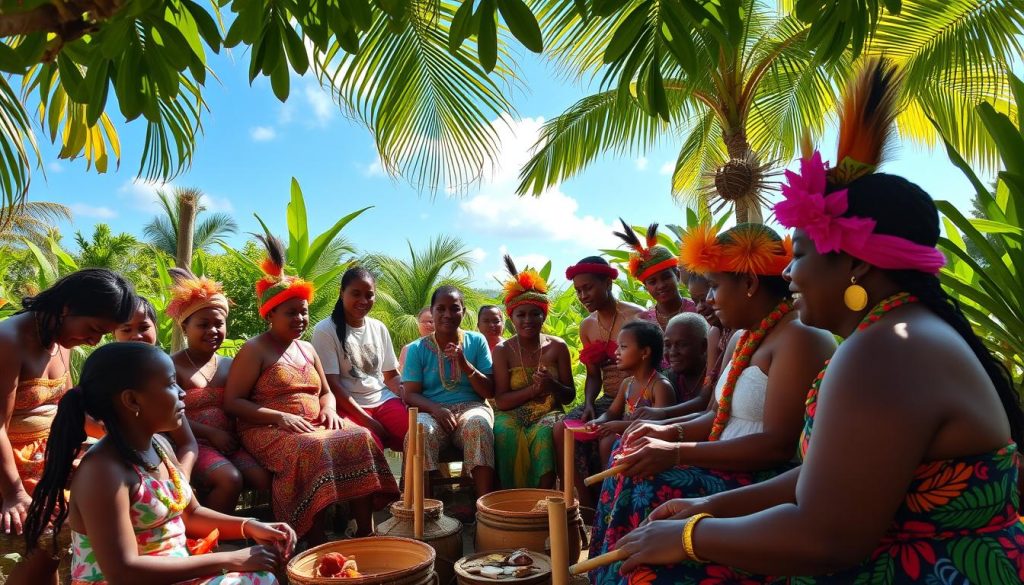
UNESCO Cultural Heritage Recognition
In 2001, UNESCO made a big move. They declared the Garifuna language as an intangible cultural heritage of humanity. This step showed how important the language is, beyond just talking.
- Recognized internationally for cultural importance
- Celebrated as a unique linguistic treasure
- Acknowledged for preserving indigenous cultural identity
Speaking Population and Vitality
About 16,100 people speak Garifuna, mostly in Belize’s coastal areas. The language stays alive thanks to:
- Intergenerational transmission within families
- Community educational initiatives
- Cultural preservation programs
“Language is the roadmap of a culture. It tells you where its people come from and where they are going.” – Rita Mae Brown
The Garifuna language keeps Belize’s cultural mix vibrant. It makes sure this rich heritage stays alive and growing for the next generations.
German-Speaking Mennonite Communities
In the heart of Belize, German-speaking Mennonite communities stand out. They add to the country’s rich linguistic diversity. These groups have kept their Mennonite dialects alive for generations, creating a unique cultural spot in Belize.
The Mennonite population in Belize has grown a lot, reaching 15,249 by 2022. They live in several colonies across the country, each with its own special traits:
- Spanish Lookout
- Blue Creek
- Little Belize
- Lower Barton Creek
- Indian Creek
Two main German dialects shape their language:
- Plautdietsch: Spoken by about 90% of the Mennonites
- Pennsylvania German: Used by around 10% of the population
“Our language is our heritage, our connection to our roots,” says a community elder, highlighting the importance of linguistic preservation.
These communities have kept their language alive while joining Belizean society. Their colonies are known for their farming and manufacturing, helping the nation’s economy a lot.
The Mennonite language tradition shows how small groups can keep their language alive. They do this while being part of the larger national culture in Belize.
Multilingualism and Language Education
In Belize, language education shows the country’s rich culture. Over half the people speak two languages. This isn’t just a skill; it’s a way of life.
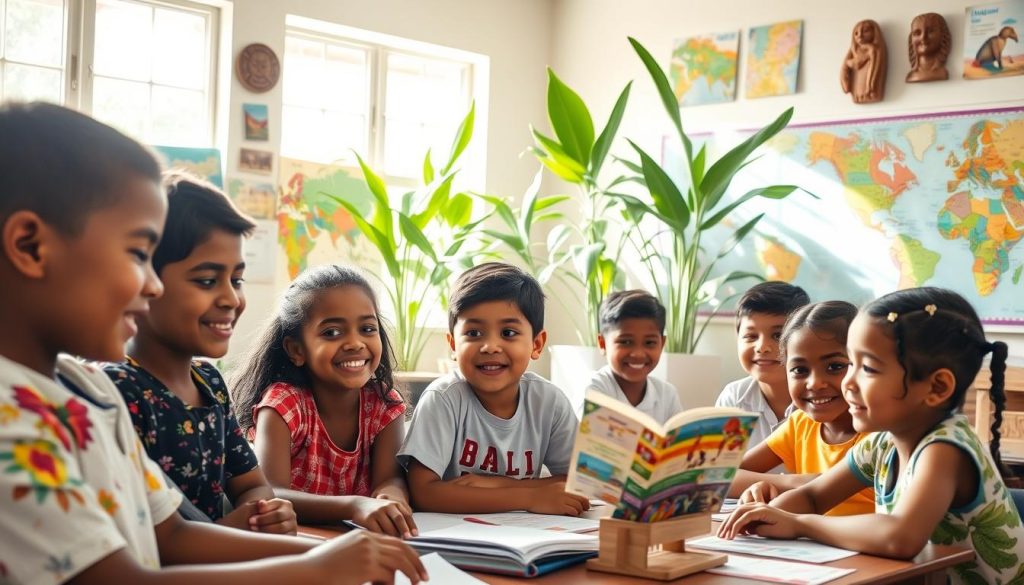
The education system in Belize supports many languages. Students learn different languages. This helps keep cultural heritage alive and prepares them for the world.
Educational Language Policies
Belize’s language policies focus on full language education. They aim to:
- Protect indigenous language rights
- Ensure English proficiency
- Promote Spanish language skills
- Recognize minority language communities
Bilingual Program Strategies
Belize’s bilingual programs are creative and welcoming. Schools use special plans that:
- Make English the main teaching language
- Give strong Spanish training
- Teach indigenous languages
“Language is the roadmap of a culture. It tells you where its people come from and where they are going.” – Rita Mae Brown
These methods help Belizean students become skilled in many languages. This is key for success in today’s world.
Language Distribution by Districts
Belize’s languages create a colorful map of communication. Each district has its own story of language and culture. This shows the rich mix of cultures in this Central American country.
- Belize District: Mostly English is spoken, acting as the main language hub
- Frontier Districts (Cayo, Orange Walk, Corozal): Spanish is the main language here
- Stann Creek District: Creole is the main language used
- Toledo District: Mayan languages are the main ones spoken
Looking closer, you see how each area has its own language patterns:
| District | Primary Language | Percentage of Speakers |
|---|---|---|
| Belize District | English | 63% |
| Cayo, Orange Walk, Corozal | Spanish | Approximately 40% |
| Stann Creek | Creole | Approximately 25% |
| Toledo | Mayan Languages | Around 6% |
Belize’s languages show its complex cultural history. Half the people can speak more than one language. This shows Belize’s skill in keeping different cultures alive while sharing a common way to communicate.
“Language is the roadmap of a culture. It tells you where its people come from and where they are going.” – Rita Mae Brown
Knowing how languages spread across Belize helps us understand its society. It shows how place and history shape how we talk to each other.
Conclusion
Your journey through Belize’s linguistic landscape shows a remarkable story of cultural diversity. English is the official language, but the country also values many other languages. This mix reflects Belize’s rich history.
Despite the risk of language loss, Belize is a beacon of linguistic preservation. It shows how important it is to keep languages alive.
In Belize, each language tells a story of cultural identity. From Mayan dialects to Garifuna and Creole, they all play a role. The country’s language scene is shaped by immigration, tourism, and social interactions.
The National Science Foundation works to save endangered languages, like Ixil. This highlights the need to protect these linguistic treasures.
Reflecting on Belize’s languages, you see language as more than words. It connects past and present. The country values its indigenous languages and English, showing respect for its heritage.
This diversity will be a source of pride for future generations. It shows how languages can live together and grow.
Belize teaches us about the power of multilingualism. It’s not just about talking to each other. It’s about celebrating our complexity, resilience, and cultural richness.
The above is subject to change.
Check back often to TRAVEL.COM for the latest travel tips and deals.
Here are some Tours & Sightseeing suggestions that might pique your interests!
